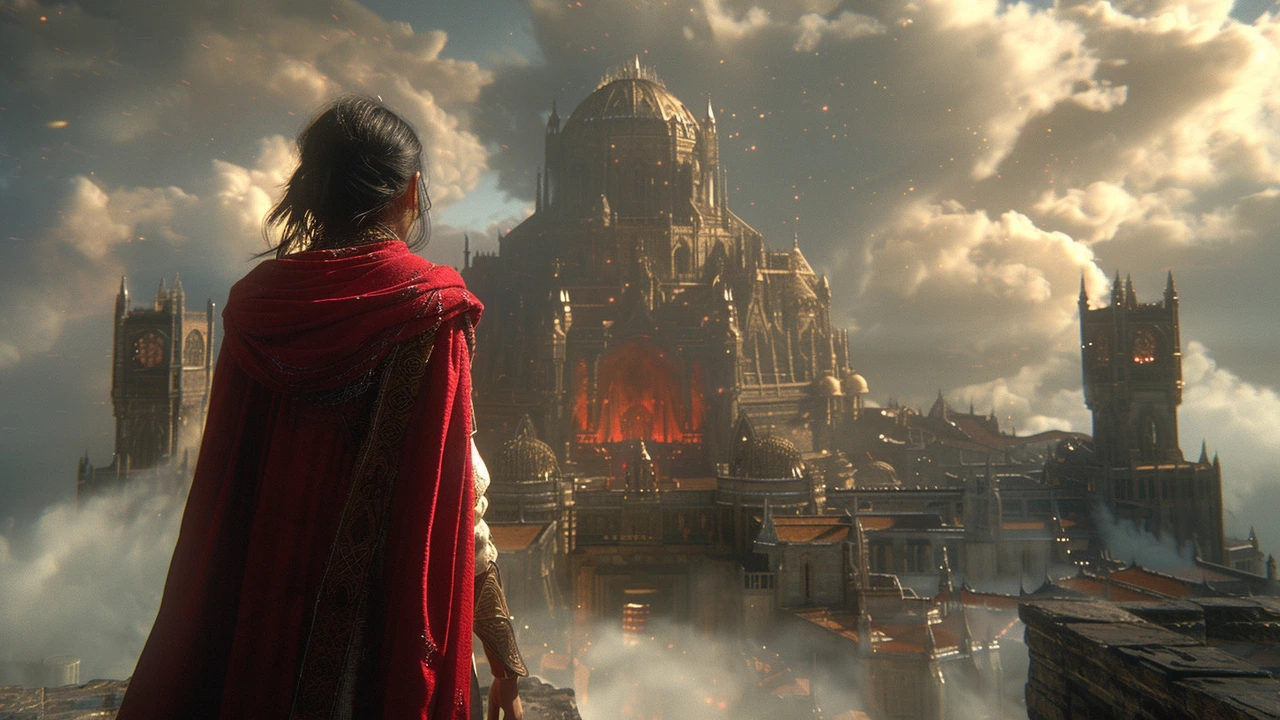Gothic Architecture: The Artistic Language of the Middle Ages
 Aug, 2 2023
Aug, 2 2023
Introduction to Gothic Architecture
What crosses your mind when you hear the term Gothic? Is it the spookiness, the mystery, or the elegance of the dark? For me, it's the architecture. When I wander around an old part of any European city, I can't help but feel awed by the imposing structures of the Gothic era. There's something in their tall and sinister structures that beckon to me, whispering tales of an age gone by. It is an artistic language woven with stone and mortar, telling stories across centuries with unique charm and character.
The Roots and Rise of Gothic Architecture
Let's dive into the history, shall we? Gothic Architecture was born in the Middle Ages in France. Before you start imagining dreary, oppressive castles, let me clarify that the term 'Gothic' was actually an insult coined by the Renaissance Italians. They considered it barbaric, a far cry from the classical beauty they cherished. Little did they know that their insult would become one of the most appreciated styles of architecture for centuries to come.
Imagine being taunted only to have your identity later celebrated. The Goths may have had the last laugh after all! Gothic architecture's unique appeal lay in its ability to combine both the functional and the sublime, serving as an artistic and structural marvel that allowed humanity to stretch towards the heavens.
The Calling Card of Gothic Architecture
Ever wondered why Gothic architecture stands out? Well, it's essentially a game of 'spot the difference' between it and its predecessor, Romanesque architecture. With those rounded Roman arches as the standard, Gothic architecture came as a snap of fresh air. It replaced the rounded Roman arches with pointed ones, gave us the large and grand windows, and took the building's height to new levels (both literally and metaphorically).
A significant aspect is the use of the ribbed vault and the flying buttress. The latter sounds like a superhero move, but it's really all about practicality. The flying buttress helps offset the upper building's weight, freeing the walls from their load-bearing responsibilities. This gave flexibility for more significant decoration and larger window openings, and thus we got the exquisite stained glass windows that we adore today. Talk about using the right move!
The Stained Glass Window: A Portal to Another Age
Gothic architecture makes me feel like Alice in her Wonderland, and Stained-glass windows are no less a rabbit hole. They transport us to a totally different age, prompting us to imagine what the world might have been like when they were created. Given their resonance, it's hardly surprising that stained glass windows are dominant in Gothic buildings, especially in cathedrals.
Take a moment to imagine. The sunlight streams through the multi-coloured pane, the beams dancing in various hues, casting an otherworldly glow onto the stone floor. You look up at the picture displayed, a tale from the bible maybe, made of fragments painstakingly put together. The experience is nothing short of divine.
Gothic Style Beyond Europe
It's a no-brainer that Gothic architecture was born in France, but it didn't remain confined to Europe. The style found takers across the globe in varied forms. Gothic Revival, as this was called, saw a resurgence in the 18th and 19th centuries. The America's particularly embraced this era, an epiphany I had during a trip to New York. I was passing through the city streets when my eyes landed on a distinct structure poking the sky with its pointed arch...Voila! A Gothic building amidst the concrete jungle!
Returning from that trip, I couldn't help but cherish the Gothic architecture more, seeing it as a bridge spanning over cultures and ages, a testament to humans' creativity and elegance.
My Affair with Gothic Cathedrals
When it comes to Gothic Architecture, my clear favorite is the majestic Gothic Cathedrals. They embody the phrase 'seeing is believing'. Often formed as a cross, each nook and corner are marked by beautiful sculptures, and the stained glass windows throw in colors that only add to the magic. I remember my visit to the Cathedral of Notre Dame. The minute I entered, the atmosphere took me back to a world far removed from reality. It was a strange mesh of eeriness and fascination that had me captivated. I marveled at the intricate detailing and couldn't help but wonder about the architects who conceptualized such beauty.
The Gothic Legacy and Influence in Modern Architecture
Thus, Gothic architecture isn't limited to the Middle Ages. Its influence is still profound in modern architecture as we keep revisiting the Goths' unique contribution in a myriad ways. These dark, majestic structures remind us of the beauty of human creation, sparking an yearning for the mystical, the quaint, the not-so-normal. Every time I stand before a Gothic building, it speaks to me in its unique dialect, inviting me into a world that is both enigmatic and charming.
In conclusion, Gothic Architecture is an artistic language of its own. It is the poetry of the Middle Ages, carved in stone, coloured in stained glass. It is a testament to humans' indomitable spirit, an everlasting symbol of their creativity and resilience. Even in this era dominated by skyscrapers and glassy edifices, Gothic architecture stands firm and ageless, a testament to time.